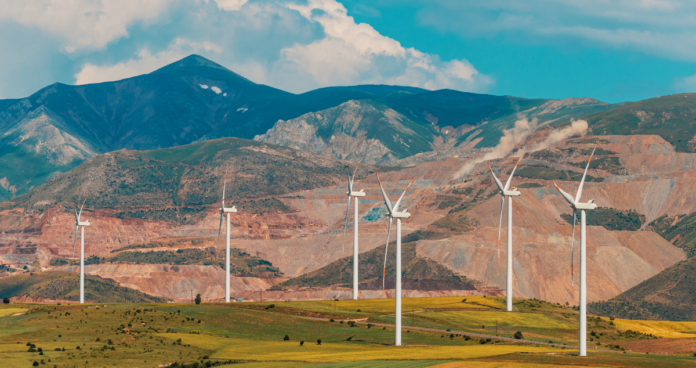Greyson Van Arsdale, Socialist Alternative (ISA in the United States)
(This article was first published on 31 August 2023)
In 2020, Microsoft CEO Satya Nadella sat down on CNBC to urge the world’s wealthiest to act on climate change. Announcing that the company aimed to be carbon negative by 2030, Nadella said, “The corporation’s purpose is to find profitable solutions to the problems of people and planet.”
That’s, after all, the ethos of capitalism – all the needs of society are business opportunities, and with the right colorful packaging and catchy marketing, solutions make profits. To proponents, this is the thing that makes capitalism “work”, that ordinary people are motivated to solve problems and make big advancements because they can line their own pockets along the way; it’s what 10th-grade AP Econ teachers call a “win-win.”
Except the oceans are rising, wildfires are raging, storms are growing – and capitalism just hasn’t figured it out.
Even Microsoft, the poster company for public commitment to environmental ideals, has fallen behind. By their own admission, Microsoft’s emissions declined only 0.5% in 2022, as the company grew by 18%. As Nadella himself said in that very 2020 interview, “‘Profitable’ is the key word.”
The world’s wealthiest and most influential gather at conferences like COP and Davos to figure out ways to make money fighting climate change, and last year, the best they could do was discuss raising the Paris Climate Accord target to 2.0 degrees C of warming rather than 1.5. (As if we aren’t already feeling the burn, and we haven’t even hit 1.5 yet.)
Some people have started to make some money on ‘green’ alternatives, sure. The electric vehicle (EV) market is projected to reach over $500 billion this year, and demand grew from 4% in 2020 to 14% in 2022. Of course, that’s with significant help from the federal government – Biden’s Inflation Reduction Act included a massive expansion of a $7500 EV tax credit, making getting an EV a lot cheaper for many people. This has been a lifeline to EV makers, because manufacturers still haven’t figured out how to make building them significantly cheaper – they still cost about 40% more to manufacture than a gas-powered car.
This problem gets worse when you go beyond the profitability of individual industries to the system as a whole. Heatwaves and natural disasters have skyrocketed in their cost to the economy and in damages to homes and buildings in the last five years.
After the devastating Maui fires last month, FEMA has authorized $5.6 million in relief funds – though the estimation of the damages to buildings on the island top $3.2 BILLION. Direct aid funds will be provided to over 2,000 households, but already over double that (4,400) have applied for aid. Thousands of families need real money to get on their feet again – and it will never, ever be profitable to simply give people the money they need to rebuild their lives. Looking at the breadth and scale of change that’s necessary to ensure safety for billions of people in a warming world – capitalism can’t solve this one.
What socialism can do that capitalism can’t
In a socialist world based around a democratically planned economy, workers would control society, not the bosses. Instead of profits going to the guy who owns the factory, who pays out the workers as little as he can get away with, the workers own the whole thing, and decide how to allocate resources.
That means that while the capitalist economy has been fighting for a profitable way forward for the oil and gas industry, which is pouring pollutants into the air at a mind-boggling rate, socialism could rapidly transition away from it. With no CEOs to bail out, workers could take the vast resources of currently polluting industries and instead put them toward ramping up production of genuinely renewable energy.
Better yet, since the resources of the world’s wealthiest people would be redistributed to serve society, lots of those workers could actually just retire comfortably if they wanted. Almost a fifth of workers in the US oil and gas industry are over 55 years old, and still working in one of the world’s most physically demanding arenas.
But there will still be plenty to do. One of the first tasks of a socialist society would be to massively expand social housing and mass public transit, which will require hundreds of thousands of workers and a great deal of resources. Under capitalism, the only way such an expansion could happen would be if these projects promised a “return on investment” – a way to make money. But in a socialist world, as long as workers democratically decide on a priority and a way to get it done, it can be done. Yes – it could be literally that simple.
That’s not to say that a socialist world would have no problems, or that turning the clock back on our warming planet would be easy. Disaster response and relief will be dominant concerns, and many coastal communities will need to make plans to relocate millions of residents further inland. Infrastructure will need to be completely overhauled to provide consistent access to safe water – which many communities in the US still don’t have. A massive, internationally-coordinated reforestation campaign would need to take place, to begin to convert the excess of carbon dioxide in the atmosphere to oxygen. But for the first time, all of this would be possible in the hands of workers, instead of a pipe dream in the hands of billionaires.
A democratically planned, socialist economy would unlock possibilities for humanity that we can scarcely dream of now. Just as the profit motive of capitalism creates a ripple effect that cascades into a tsunami of inequality and oppression, designing society around the needs of people and the planet would have its own ripple – one where the potential of humanity could be fully explored.
A socialist world is worth fighting for
The climate movement has struggled to take on a genuinely mass, ongoing character in the United States. But even internationally where the movement has been much more developed it feels like momentum has stalled since the onset of COVID. In June, famed high school activist Greta Thunberg ended her “Fridays for Future” weekly school strike as she graduated. On Twitter, she commented, “We are still moving in the wrong direction, where those in power are allowed to sacrifice marginalized and affected people and the planet in the name of greed, profit and economic growth.”
Thunberg is absolutely right – we are still moving in the wrong direction, and for many young people, that is a terrifying prospect. It’s no wonder, then, why some activists have taken to spectacle-based tactics like throwing soup at famous paintings to try to grab attention to fight climate change. To some, it feels like we’ve already lost.
But the truth is, for decades, the climate movement has been fighting with both hands tied behind its back. The struggle has been hampered on one count because its demands have been limited to what is possible or reasonable under capitalism, not because young people fear radical change, but because the NGO mis-leadership is in many cases tied to capitalist political parties. This rules out such drastic, but necessary, demands like ending the fossil fuel industry and banning new drilling. It has also been held back on another count because the climate movement has largely failed to draw its power from the working class, who make society run and without whom all industry stops.
The time is long overdue to even the odds. A youth climate movement connected to the broader labor movement and conscious of the fundamental need to overturn capitalism to truly end climate change would be fundamentally different from all previous climate struggle.
It is the united and organized strength of working-class and young people globally that can strike a blow against climate change, by taking profit out of the driver’s seat. A critical step in building toward this in the US will be the formation of our own mass working-class party, with a clear socialist program and determined leadership.
To win, we also need strong organizations of the working class. This means continuing to build fighting unions in our workplaces that are well organized, truly democratic, and have the active participation of all workers. These unions need to link up with social movements against climate change, sexism and racism as part of the struggle to rebuild a fighting labor movement, and point the way forward on a working-class basis.
To young people and students who have grown up in a world where massively devastating storms and smoke-filled skies are commonplace, the prospect of turning the tables on climate change may seem wholly idealistic. But in reality, all of the progressive victories of history – from the Civil Rights movement to the throwing off of monarchies to weekends and the eight-hour workday – have been won by working class people, and our job isn’t over yet. A socialist world, one that is capable of fighting climate change and ending exploitation and oppression, is worth fighting for.




